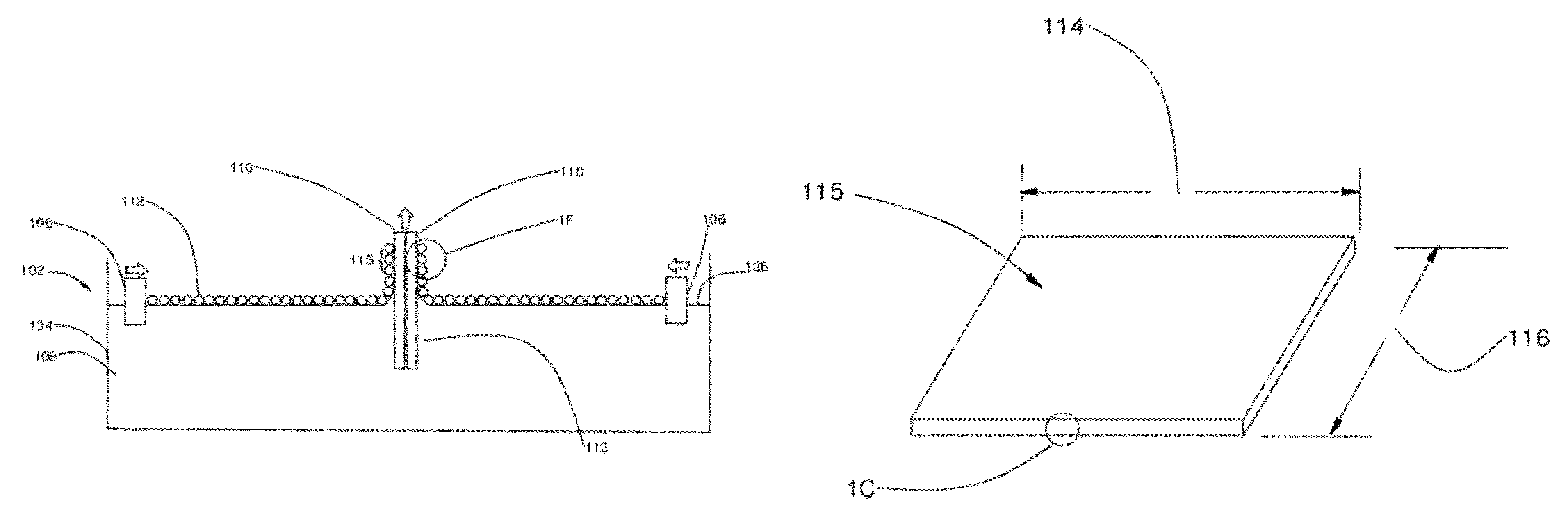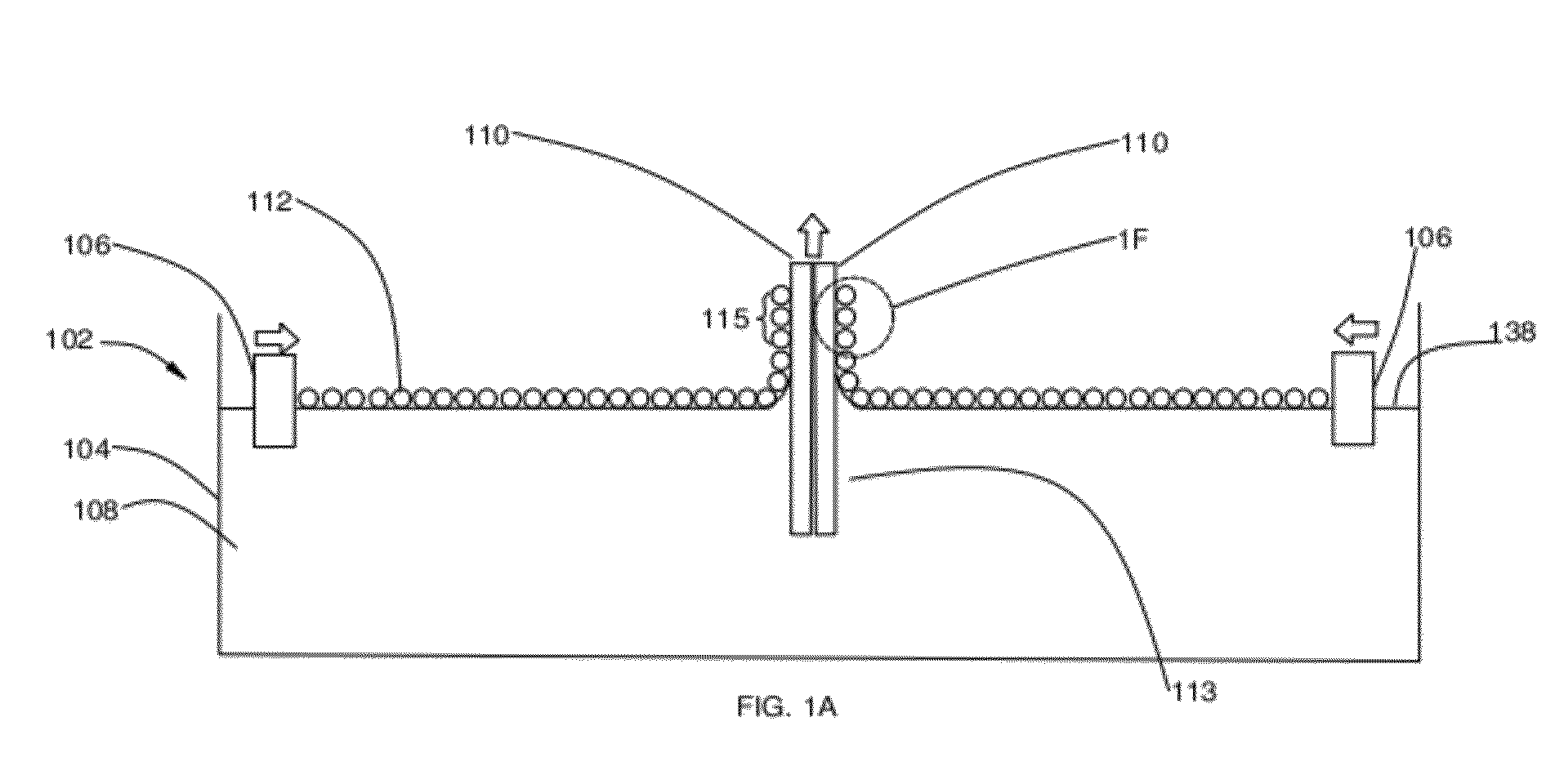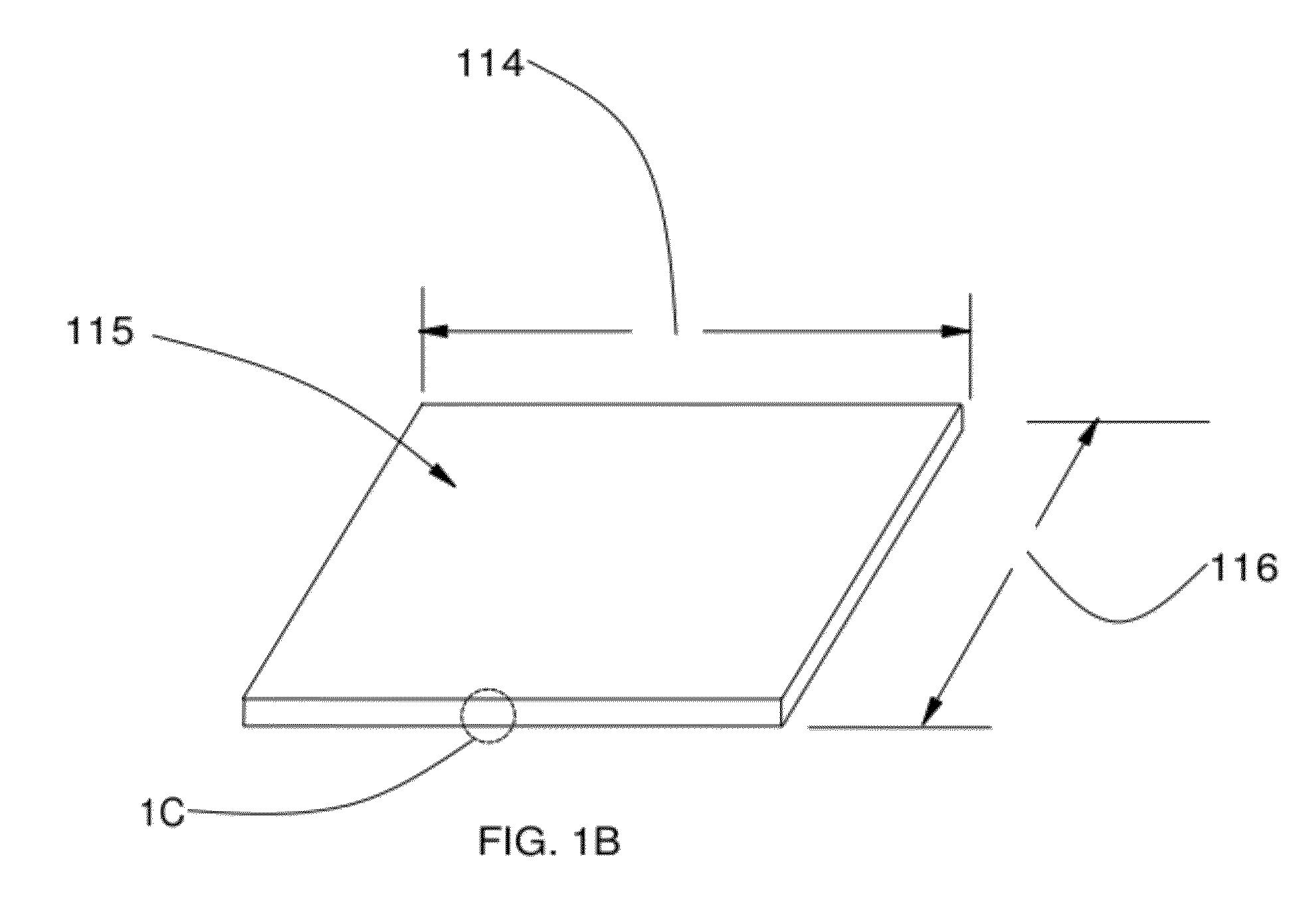Sensor system with plasmonic nano-antenna array
a technology of plasmonic nanoantenna and array, which is applied in the direction of optical radiation measurement, instruments, spectrometry/spectrophotometry/monochromator, etc., can solve the problems of uncontrollable close-packed hexagonal structure, non-scalability of above-ground approaches, and inability to achieve scalability, etc., to achieve the effect of large local electromagnetic field enhancemen
- Summary
- Abstract
- Description
- Claims
- Application Information
AI Technical Summary
Benefits of technology
Problems solved by technology
Method used
Image
Examples
first embodiment
[0104]THE PLASMONIC NANO-ANTENNA 131 ARRAY (PNA) SUBSTRATE: FIGS. 1A through 1F schematically illustrate the basic process (FIG. 1A) and resulting plasmonic nano-antennae array structure (FIGS. 1B through 1F) of nano-antenna array substrate 111 produced by the water-filled Langmuir-Blodgett trough system 102. Such large-scale, highly SERS-active substrates can only be obtained by assembling a crystal-like nanoparticle array 115 on a solid substrate 110 such as glass, metal, acrylic, plastic, optical fiber core, or textile using a Langmuir-Blodgett Controlled Self-Assembly (LBCSA) fabrication technology. The nanoparticles are selected from gold (Au), Silver (Ag), Rhodium (Rh), Palladium (Pd), Osmium (Os), Iridium (Ir), Platinum (Pt), Titanium (Ti) or Aluminum (Al), or a combination of them. In the following, a two-trough Langmuir-Blodgett trough system is described, however the inventive concepts apply to single trough system also.
[0105]Again referring to FIGS. 1A through 1F, using t...
second embodiment
[0148]Multiple optical fibers with the deposited nano antennas can be combined to form an optical fiber bundle 202 as shown in FIG. 9D. Inside the gas sensor head of the second embodiment, the target gas sample molecules are drawn in and guided via a gas flow channel through the nano-antenna fiber optic bundle array 204 (FIG. 9C). Laser light is guided through the nano-antenna fiber optic bundle array on its way to the Raman spectrometer by employing a series of optical mirrors 196, optical lenses 198 and filters 200 (FIG. 9B).
[0149]The plasmonic nano antenna fiber optic bundle array increases the Raman scattering signal strength and also increase the probability of capturing the target molecules 124 in the antenna hot spots to nearly 100%. The excited hot spots fill the entire gas flow channel so that the passing target molecules cannot avoid interacting with them. The plasmonic nano-antenna array is assembled by parallel arrangement of the antennas on the optical fiber core surfac...
PUM
 Login to View More
Login to View More Abstract
Description
Claims
Application Information
 Login to View More
Login to View More - R&D
- Intellectual Property
- Life Sciences
- Materials
- Tech Scout
- Unparalleled Data Quality
- Higher Quality Content
- 60% Fewer Hallucinations
Browse by: Latest US Patents, China's latest patents, Technical Efficacy Thesaurus, Application Domain, Technology Topic, Popular Technical Reports.
© 2025 PatSnap. All rights reserved.Legal|Privacy policy|Modern Slavery Act Transparency Statement|Sitemap|About US| Contact US: help@patsnap.com



